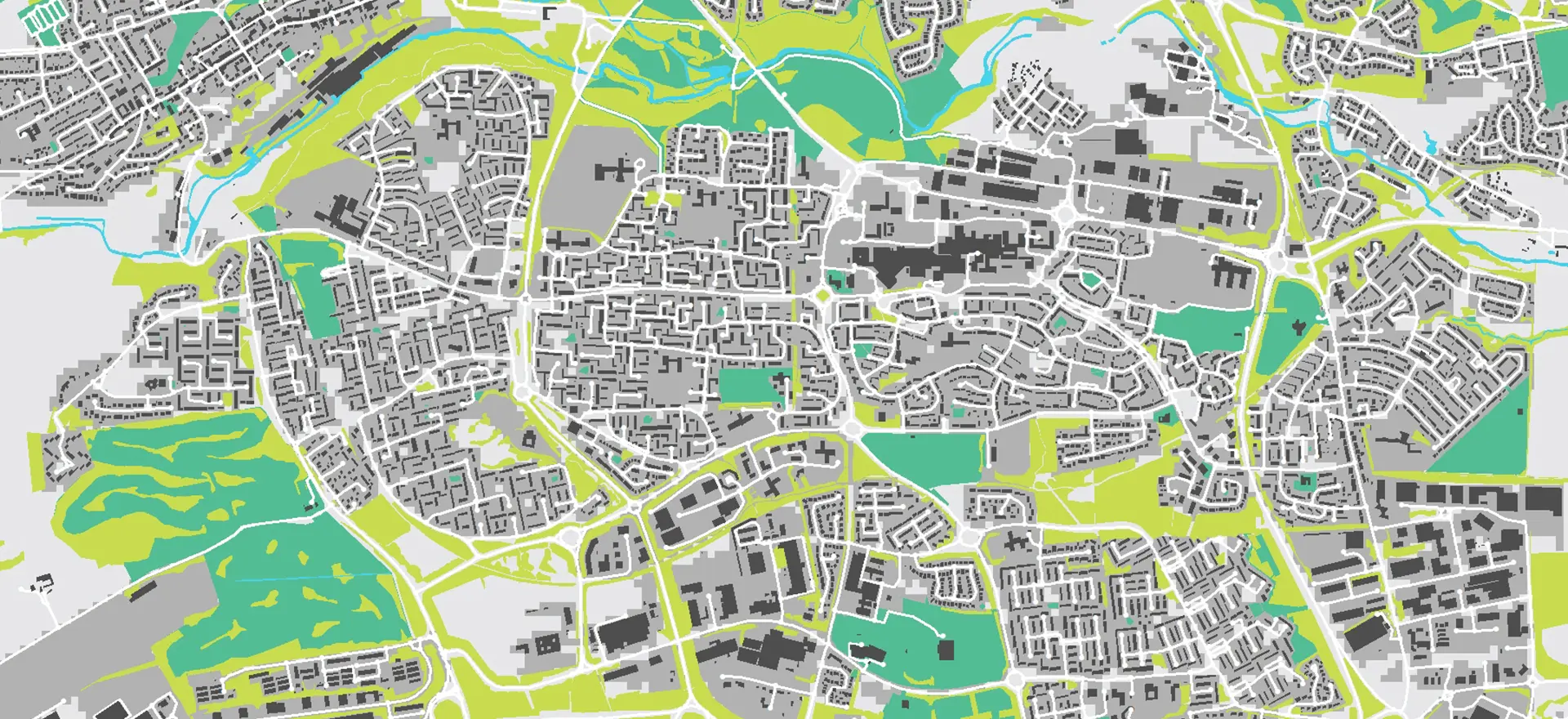This year, we asked our annual town planning interns in the Edinburgh office to consider what Scotland’s new towns could teach us about 20-minute neighbourhoods and planning for the future. This blog reviews Glenrothes and
Patrick Dalziel reviewed Livingston.
Completing Lichfields’ Summer internship programme in the Edinburgh office allowed me to explore the evolution of the ‘new town’ of Glenrothes in terms of the theories of local living. 20-minute neighbourhoods are a pivotal aspect of recent planning policies in Scotland, despite the concept having floated around planning discussions for years. As part of my internship I looked into the 20-minute neighbourhoods that were built as part of the new town programme to discover how they have fared over the last 75 years and what we can learn for future development.
Introduction to 20-minute cities
As is known in the planning world, Ebenezer Howard’s Garden Cities transformed the approach to planning, striving towards a healthy, active town lifestyle by fulfilling the community's needs within its locality. This further evolved into the New Towns Act 1946, which Glenrothes is a result of. New towns had the same core principles of community wellbeing but enhanced strategic economic strategy on a large scale.
With momentum building towards 20-minute neighbourhoods within national planning policy, such as Policy 15 in NPF4, it is important to recognise that the realities of the concept are not dissimilar to the ambitions of Howard’s. NPF4 Policy 15: Local Living & 20-Minute Neighbourhoods aims to encourage, promote and facilitate place principles that create connected and compacted neighbourhoods where people can fulfil their daily needs within a reasonable distance from their home.
Introduction to Glenrothes
Glenrothes was to create a self-sustaining community focused on wellbeing, economy and environment. It was:
-
Designated in 1948
-
To provide social housing and community facilities to coal mining families inked with the East Fife Coalfield expansion and new technological industrial potential.
-
Intended to have population of 32,000 later revised to 45,000.
-
Designated to be 34% built environment, 66% greenspace.
-
To have a mixed population providing social housing for the community, with 1/8 residents to be miners working in the Fife Coalfield.
The neighbourhoods of Woodside and Auchmuty were to be established by 1950. Development past this was staggered until 1970, when a surge of development occurred and created the large and growing town of Glenrothes.
The settlement pattern accentuates the breakdown of neighbourhoods into segments that come together to make up Glenrothes. This raises the question of connectivity – located 25 miles from Dundee and 30 miles from Edinburgh, its connections to these cities are good via main roads like A92 and A90, but its internal connectivity (that is, between segments) is poor.
Today Glenrothes has a population of 37,468, with an ageing population expected to increase by 46% by 2026. Following the decline of the mining industry, the town faced job challenges, but today, Fife Council operates its offices there, contributing to two-thirds of local public administration jobs. Despite that deprivation is a problem in some neighbourhoods.
What can Glenrothes tell us about 20-minute neighbourhoods?
Glenrothes originates from the neighbourhoods of Auchmuty and Woodside, located with crucial links to Glenrothes’ shopping centre and Eastfield industrial estate so on paper they should be able to meet the daily needs of their residents in line with 20-minute neighbourhood principles.
However, Auchmuty is the most deprived neighbourhood in Glenrothes, ranked in the top 10% most deprived in Scotland. Despite efforts of improvements within Glenrothes’ Local Strategic Assessment, it remains the most deprived in the area. Woodside is the 5th most deprived.
Overall, the intentions set out for the new town of Glenrothes were honourable, but reality took over, and 75 years on, the mining industry has left, and the town has problems associated with deprivation with neighbourhoods ranking in the top 10% most deprived in Scotland. From Glenrothes’ experience, three key lessons can be identified and applied to future 20-minute neighbourhood projects:
-
Phases must work together with road and active travel infrastructure to ensure development phases do not become fragmented settlements within a large development.
-
Developments should be made up of a network of connected places to allow for 20-minute neighbourhood principles to work and not isolate themselves.
-
Each neighbourhood should not a carbon copy of the next and can provide different facilities and services, and access between them is crucial.
-
It is important to consider societal change as individuals’ movement is more fluid and not as static today than in 1950; therefore, connectivity between smaller localities of development is as crucial as outward connections
-
For local facilities to fulfil the needs of the local community, the population size/density must align with the catchment population of the desired facility.
Socio-economic makeup affects the way people live and use their places, simply providing facilities and services within a 10-minute walk from home does not guarantee the success of a place. The inclusion of all 20-minute neighbourhoods’ principles alone does not make a ‘good place’; there are many external factors that impact its success, such as socio-economics. Overall, it seems that 20-minute neighbourhoods of today can learn a lot from considering the new towns of the past.



